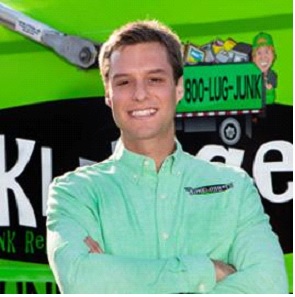All business owners set goals in one form or another. Goals can instill accountability and responsibility in people, but not all goal setting methods are created equally. For companies really looking to increase their growth trajectory, they need a Big Hairy Audacious Goal (BHAG).
BHAGs were formally introduced in Built to Last by Jim Collins and Jerry Porras. The book details how some of the most successful business leaders used a BHAG to light a fire under their employees and push their companies to achieve the impossible.
BHAGs are just one form of goal setting, but there are some key differentiators that set them apart from the others. BHAGs are clear, concise, mission-focused, time-constrained, and measurable. These defining characteristics help outline your BHAG, but there’s one more element that modern BHAGs need to bring this monster to life: social good.
Possessing a BHAG that ties back to a social purpose is a powerful way to make an impact on your employees, customers, and community. When company goals are in line with a greater social good, it motivates everyone to work together and grow with a purpose. For example, 75 percent of millennials would take a pay cut to work for a socially responsible company according to a study by Cone Communications.
Adding the element of social good to your BHAG is essential, yet it’s one of the many oversights business leaders make when defining their BHAG. Let’s go through some other signs that you’ve chosen the wrong BHAG and need to reevaluate.
It’s too easy.
If you achieve your BHAG within one month or even one year, then you set the bar too low. Your team may be motivated for the short-term, but they’ll lose steam when they accomplished the goal. The BHAG monster will be taken down in one easy pass, and everyone will feel less than inspired because of it. There’s no cause to celebrate or be inspired when they only exerted a bit of extra effort.
BHAGs are a long-term motivational strategy. They need to push everyone to achieve higher and higher peaks of success on their way to the BHAG at the top of the mountain.
Remember to embrace the audacious. Your BHAG needs to be something beyond your reach, maybe even something that makes you seem a bit crazy. Where do you want your company to be in 10 years? The right BHAG will help you answer this question.
A BHAG becomes the driving force of your company because it’s so difficult to attain. It should seem impossible and evoke reactions from others. If your employees are saying, “Are you sure we can do this?” then you know you’ve chosen the right one. You’re putting the pressure on, and that’s when people act.
No one’s talking about it.
If your BHAG isn’t a conversation-starter, it’s dead in the water.
Your employees should be discussing your BHAG around the watercooler and in meetings. They should get wide-eyed whenever your BHAG is mentioned. It should be the key indicator that guides whatever actions your employees take. If they’re not asking themselves, “Does this support our BHAG?” then it’s time to either refine your BHAG or reintroduce it to the team as the ultimate company goal.
Remember that your BHAG should directly correlate with a social purpose to get people inside and outside of the company talking. Customers are more likely to be loyal to a brand if they know that their support of a product or service also impacts a larger social issue. According a study by Sprout Social, two-thirds of respondents said that it’s important for brands to take public stands on social and political issues. They’re tied into the emotions behind a brand, not just the price tag.
Employees are also more likely to be motivated if they know they’re not working toward just a company goal, but something bigger than the company itself. If they see upper management passionately working toward achieving a social purpose, the feelings will trickle downstream. It’s especially impactful if management supports this social change in all areas of the business.
A good BHAG will also stir up the media. You create a story worth telling by tackling a monstrous issue that affects more than just your industry. There’s a great opportunity to put out a press release showcasing the risks your company is taking to address a bigger problem. It’s much easier to do this when your BHAG is already in line with a social purpose because it’s something everyone is familiar with. You introduce a widely familiar problem and address it with your individual industry solution. It’s a great way to create awareness.
When you address a larger social problem in a unique way, it establishes your company is an innovator. The right BHAG gives you the chance to talk about something bigger than the company — it uncovers an industry problem that others are scared to tackle.
There’s no risk.
If you’re not feeling pressure from your BHAG, then it won’t be effective. The story of David and Goliath wouldn’t be impactful if it had two evenly matched warriors facing off. It’s the element of chance that makes it an exciting story.
There needs to be risk associated with it to ignite your employees. The right BHAG will motivate them to think creatively about achieving the lofty goal. They’ll be forced to use all of their skill sets and creative approaches to take down their new Goliath.
You have a good BHAG if you can identify only some of the factors that are in your way. There will be many unknowns that you will come across. If you know everything up front, your BHAG isn’t risky enough. You’ll be able to anticipate everything, and that makes for a boring journey to the top.
As a junk removal company, we know that we’re going to have a very tough time achieving our BHAG where no junk we pick up ends up in a landfill by 2025. There are many internal and external factors working against us to try and keep us down. A lack of infrastructure and the increasing costs to recycle are only a few of them. But we know that there’s no escape route, no fallback option, no giving up — we have no choice but to continuously come up with creative solutions.
The right BHAG will ultimately push you out of your comfort zone, but that’s exactly what you need to achieve the impossible. You’re more invincible when there’s nothing left to lose.
There’s no measure of success.
How do you determine success?
BHAGs need specifics to be effective. Otherwise your success is open to interpretation if the goal is vague. There’s a huge difference between “Increase our online sales” and “Increase our online sales by 30 percent.” You know what you need to achieve with the latter. With the former, you can do a little and say you achieved a lot. It’s dangerous when you’re vague.
BHAGs are successful when they’re clear, concise, and measurable. Without clear numbers tied to your BHAG, you’ll be tempted to say “close enough.” You need to look at your BHAG in black and white: you either accomplish it or you don’t. There shouldn’t be room for interpretation.
Instead of creating a shopping list of easily achievable short-term goals, consider implementing a BHAG. You’ll be surprised what your team can accomplish where passion and pressure intersect.







